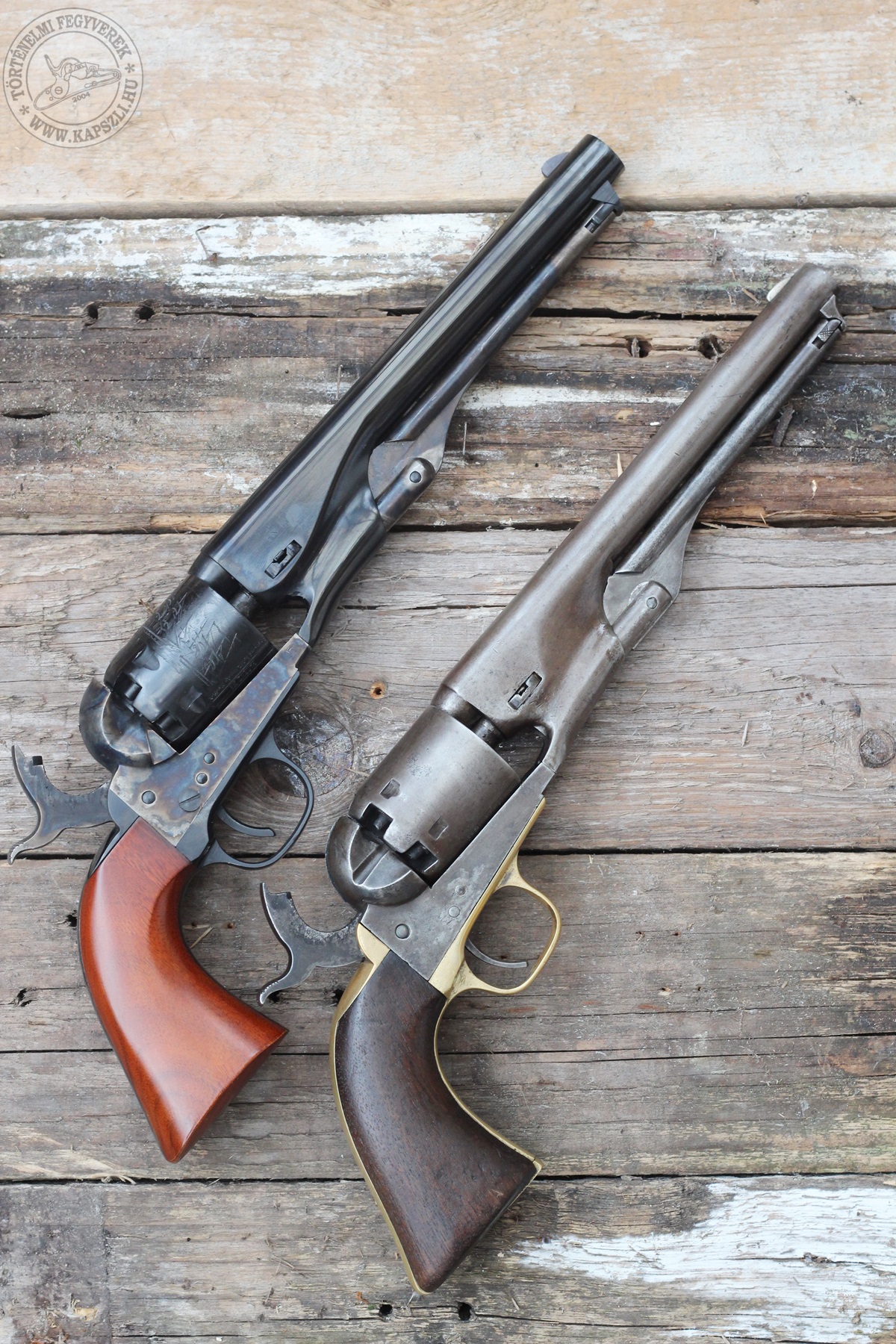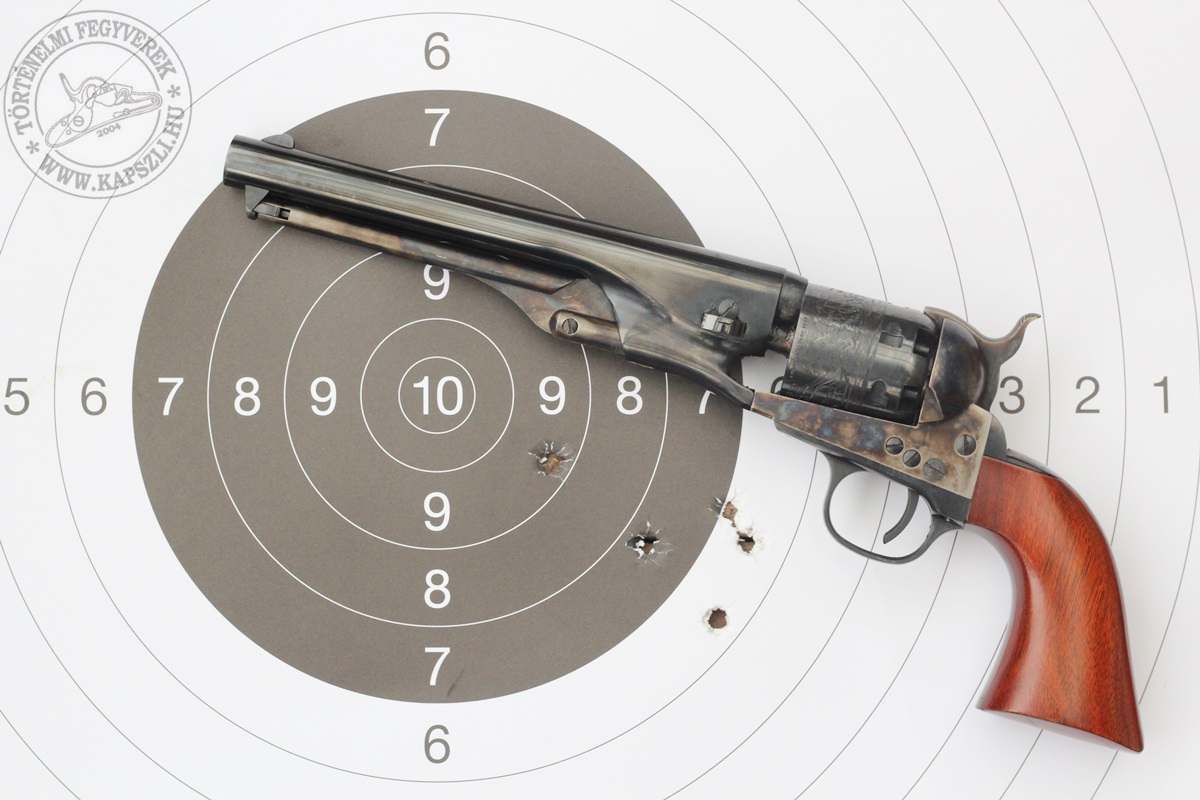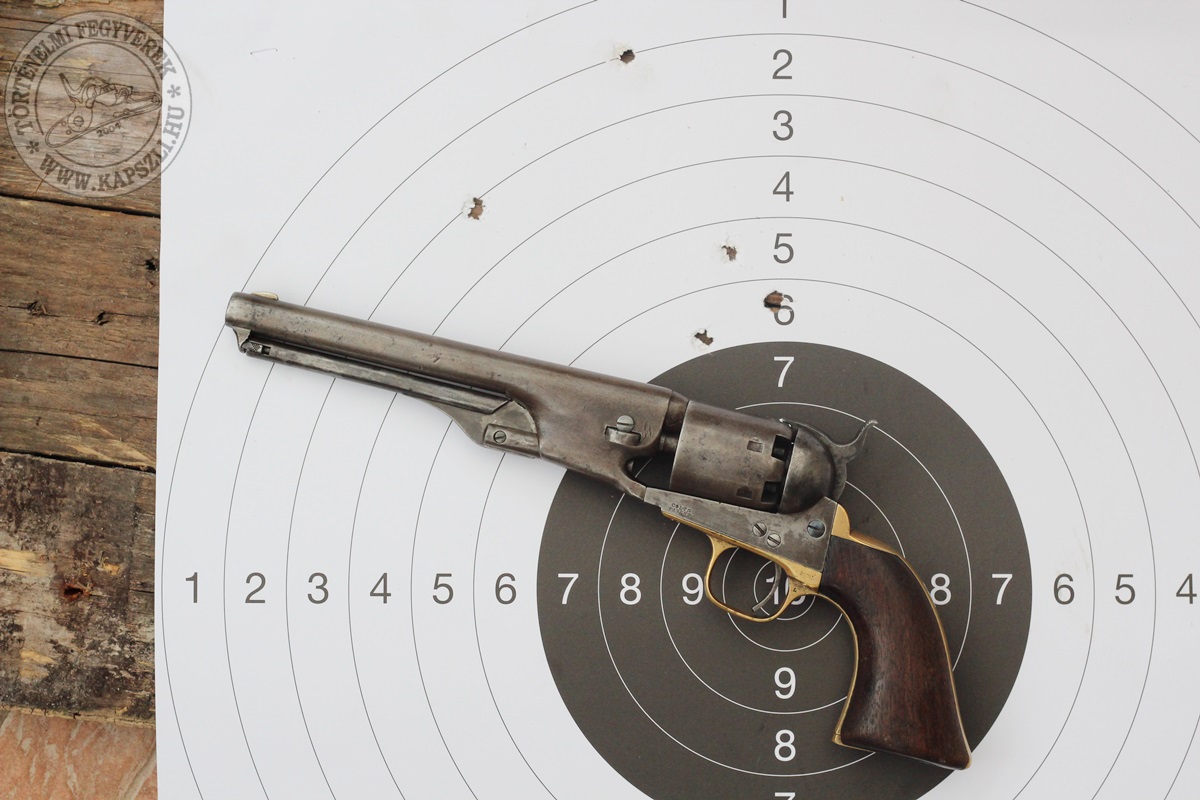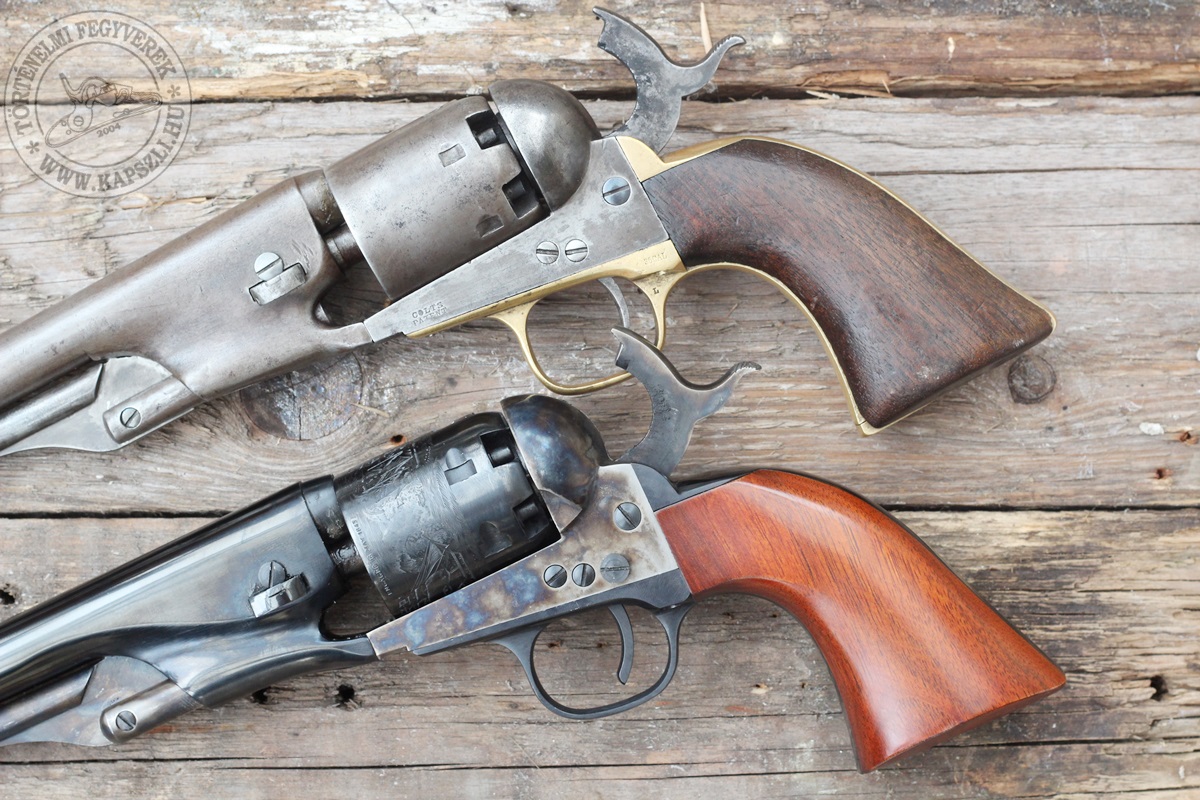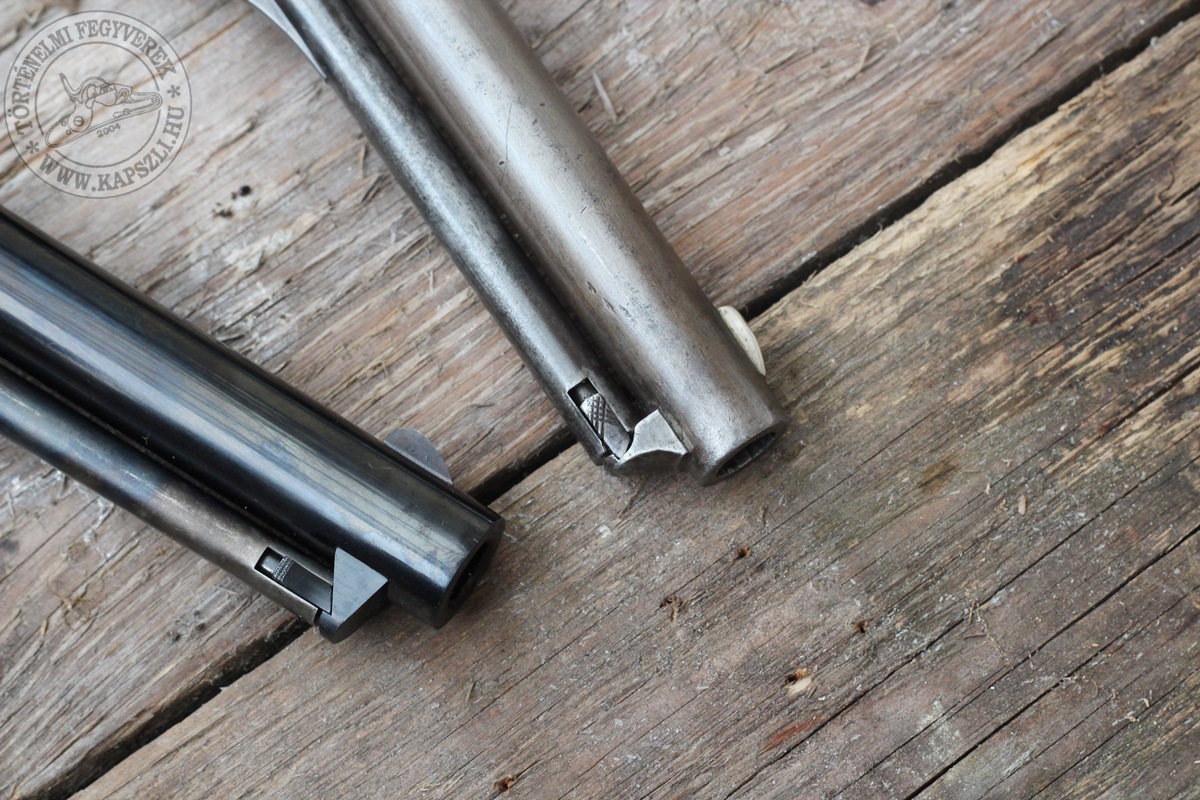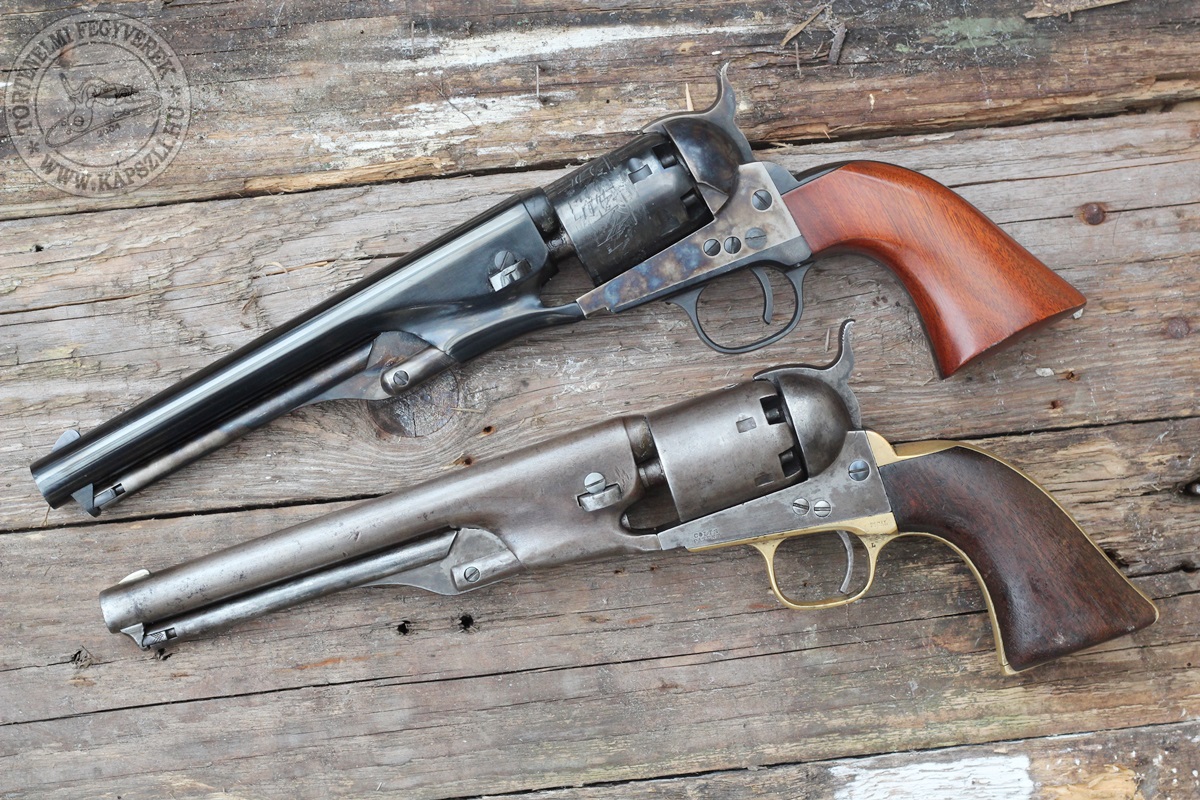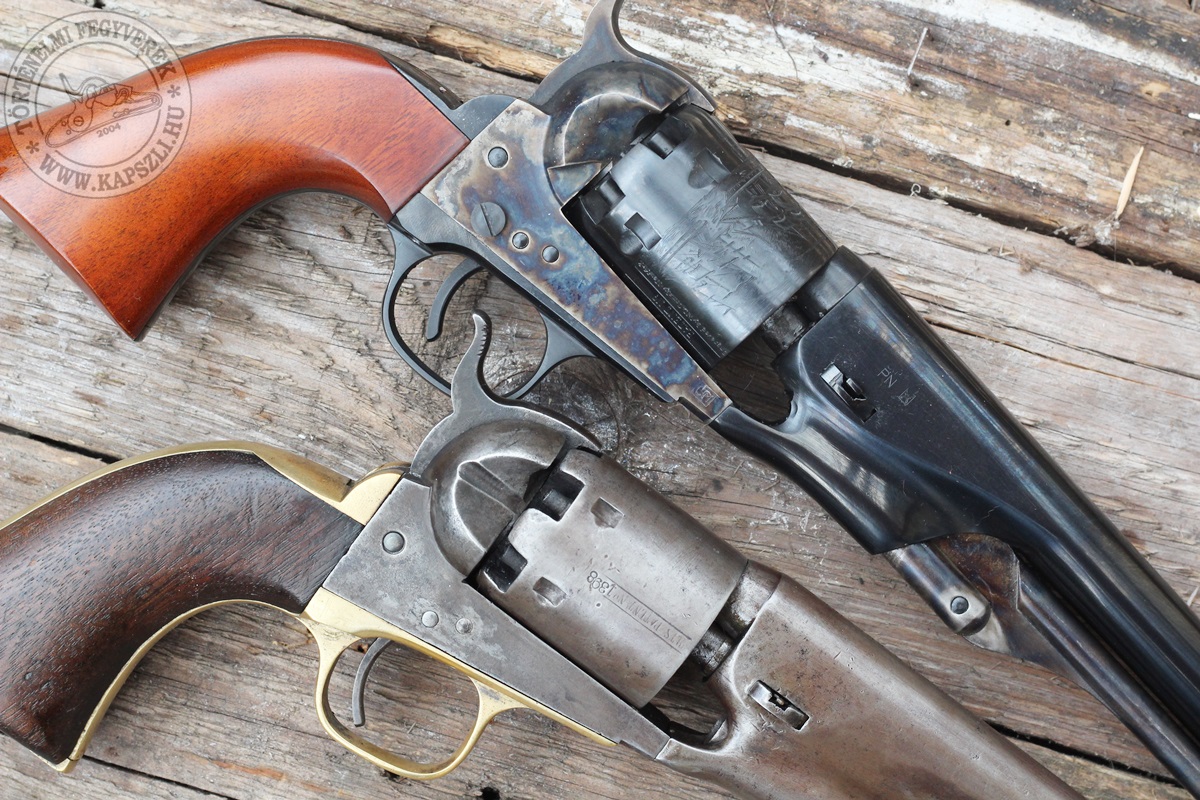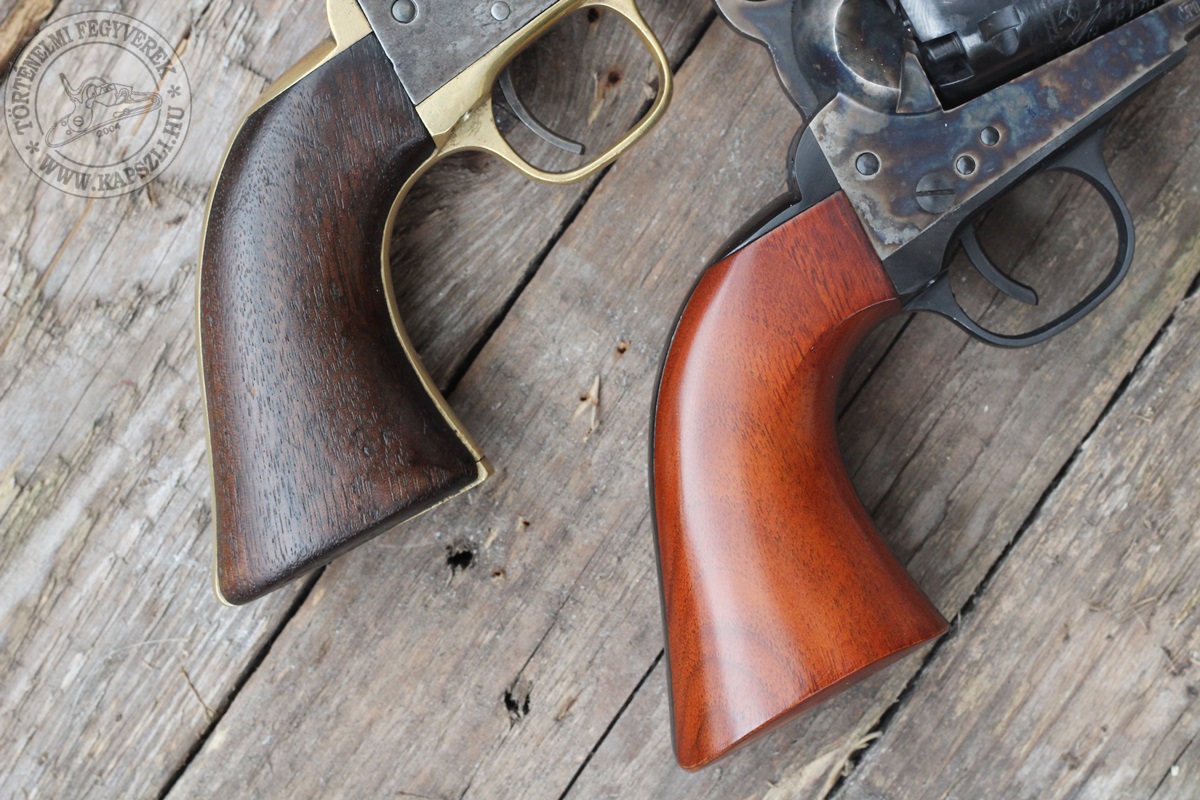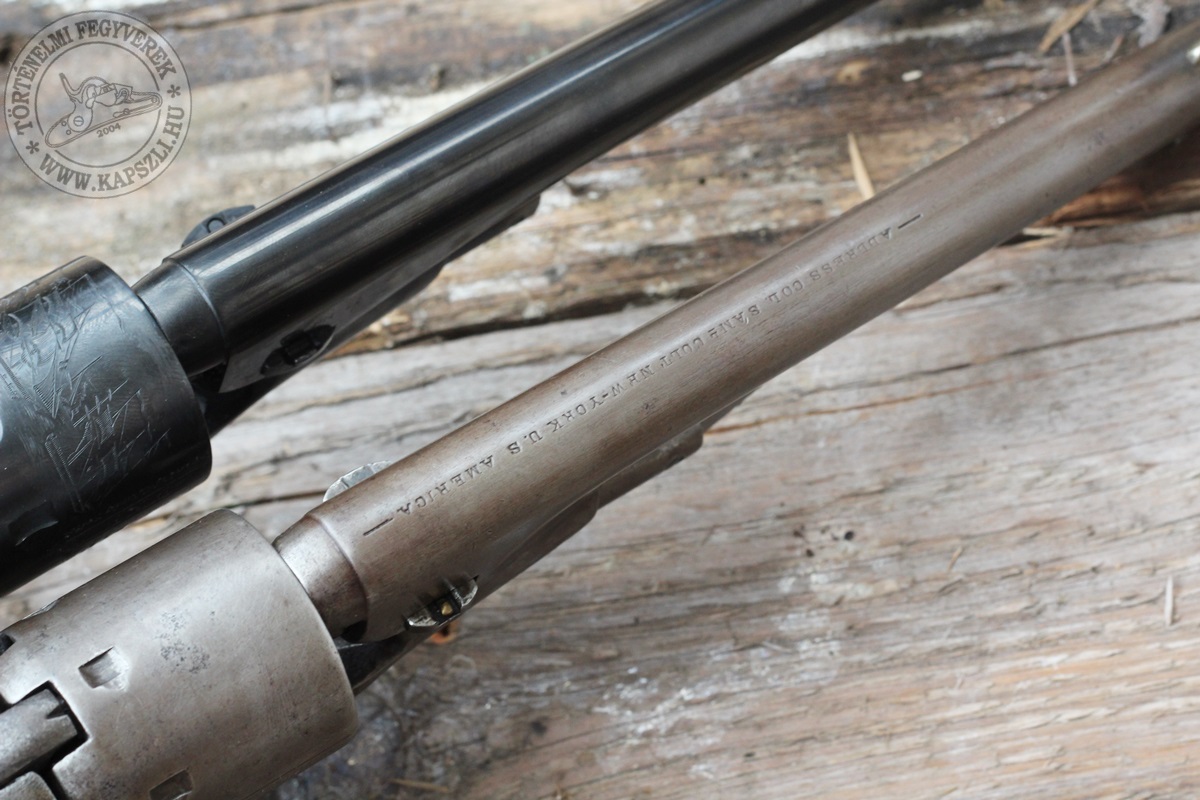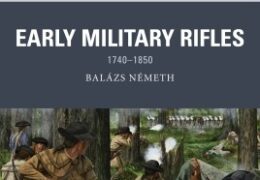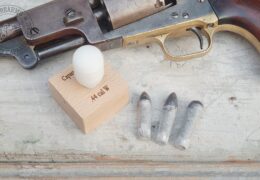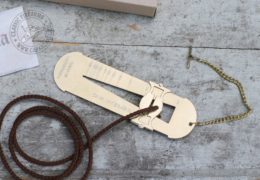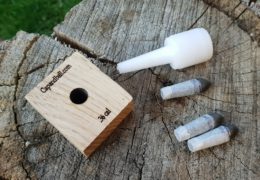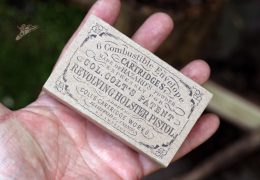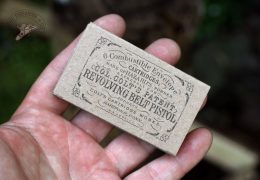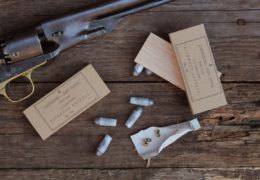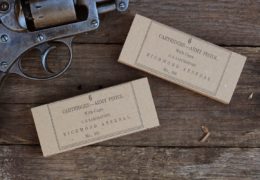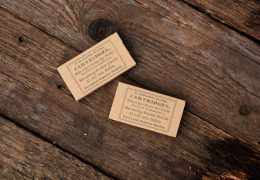Comparison: Colt 1861 Navy and Uberti replica
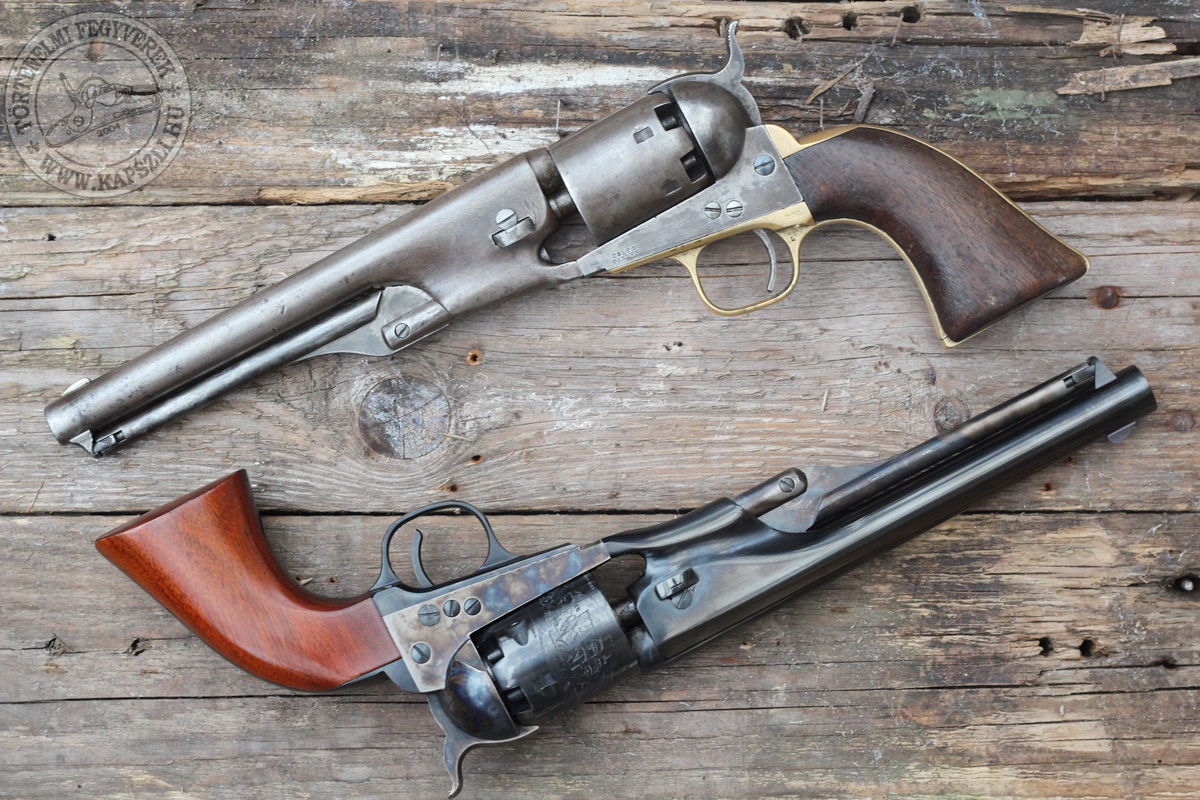
The 1861 Colt Navy is one of the most beautiful revolvers ever. Well-proportioned, steamlined, a designer’s success even with the eye of the modern times. Some people say, it’s the best percussion revolver ever made.
Exaggeration, of course – but it’s a nice one afterall. But the name was not given by it’s manufacturer: the early collectors were the first who addressed the revolver as 1861 Navy. The name stucked, in spite of Colt’s official terminology: the New Model Navy. It was the member of the last triumvirate that Samuel Colt saw in production. Along with the full-frame 1680 Army in .44 cal, and the 1862 Police (New Model Police Pistol by Colt’s terminology) five-shooter in .36 cal, the 1861 shared the same new outfit.

Of course, there were similarities in the inside as well. All three models were made of a very new steel alloy, advertised as the “SilverSteel”. The parts made of this alloy were given a special tempering to be more dureable. Colt said, that the bullets which were fired out from the new alloy barrels had 30% more energy, compared to the other cast-steel made revolvers. That depends on bullet, powder charge and rifling and not by the material of the barrel – but it made a good slogan.
The new model revolvers came to market in 1860-61. The 1860 Army had a real success, but the 1862 was outdated and expensive, compared to other revolvers, made by competitors such as Remington. The 1861 Navy was assigned to take back the big military orders – which plan never came to success. In June 1862 Colt dropped the price form $23 to $15 – but despite the new pricing and the new design, the advantage of the Remington revolvers for $12 kept on. The 1861 saw very limited success.
Colt manufactured 38.843 pieces of the 1861 Navy revolver, when the production was halted in 1873. The US Government bought more than 40% of the guns, but some revolvers came to the Army through pirvate companies. The rest was sold on the civil market.
The original revolver
Our old friend is a true war hero. As the years went by, the bluing came off – the SilverSteel could be stronger, but it does not tolerates finishing. The version which can be seen in our pictures is the most common 7,5″ barrel version with brass trigger guard. The serial number tells us that this revolver is from the first production year, made in 1861. The sub-inspection markings can be seen on the parts. On the stock, the marking can be barely seen, it faded out during the years.
Altogether, it is in good shape. There is some minor rust in the barrel, but the condition of the rifling is still around 90%. The nipples gave me quite a headache, three of them was bured out completely, and the replacement was a tough job.
The Uberti replica
The tested repro gun was inspired by the most uncommon version of the 1861 Navy. Only 100 pieces was manufactured with steel trigger guard and backstrap, with lugs on the frame so a buttstock can be attached. Uberti has also in production line the original brass backstrap-triggerguard version, called the Civilian. (Despite of this was the version, whicg made originally for the Government).
Differences and similarities
The overall feel of these two revolvers are quite the same. Uberti has copied the original piece so faithfuly, that several parts are interchangeable between them. For example, the repro cylinder fits pefectly in the original frame.
There are few differences of course, especially between the cylinders and the barrels. First, the chambers of the origial cylinder are much bigger than on the repro. They has .370 – .371 diameter on the repro, which is constant in the whole chamber. The original’s chambers accept a .383 ball whitout sizing it down, as they cone-shaped. The chambers of the original cylinders are longer, so they can be loaded with bigger charges.
The two barrels also differ. Each of them ha 7 grooves, but the rifling on the Uberti barrel is left-twisted at a constant 1:19 rate, while the Colt has a right-twist, progressive rate riflinf. According to my experiences, the barrels with a progressive twist rate work well with a variosity of charges. However, a constant twist rate is easier (and thus, chaper) to make, so replica manufacturers stick to it. The Uberti rifilng is fast enough to work well with small charges and be accurate enough to meet the demands of the modern day shooters.
Shooting
I decided to use .375 round balls for my Uberti and .383 balls for the original revolver. The original bullets used to have a .380-385 diameter. I used the 18 gr Swiss 3Fg powder charged, which worked well through the years. So, the load for the Uberti revolver was the following: 18 gr 3 Fg Swiss + 7 grain corn + .375 RB + Chariot’s lube. I was aiming the bottom of the black area, and the bullets hit the target at the same elevation, but a little deterioration to the right. 4 of 5 shots hit in an area sized as the 10-ring, whit a flyer out to the left. That one was definately a shooter’s failure.
So, the load for the Uberti revolver was the following: 18 gr 3 Fg Swiss + 7 grain corn + .375 RB + Chariot’s lube. I was aiming the bottom of the black area, and the bullets hit the target at the same elevation, but a little deterioration to the right. 4 of 5 shots hit in an area sized as the 10-ring, whit a flyer out to the left. That one was definately a shooter’s failure.
I loaded 5 chambers as well, when fireing the original revolver. 3 nipples were in acceptable condition, but the others were burn out. The chamers with bad nipples threw the bullets to the upper left corner, the others went to where I wanted to. I’ve ordered the new nipples for the 1861 Navy, so there will be another test soon.
And for the moral of the story: always place back the wedge after each shot, when shooting an original Colt like this one. A loosy wedge can ruin your accuracy – and your day!



